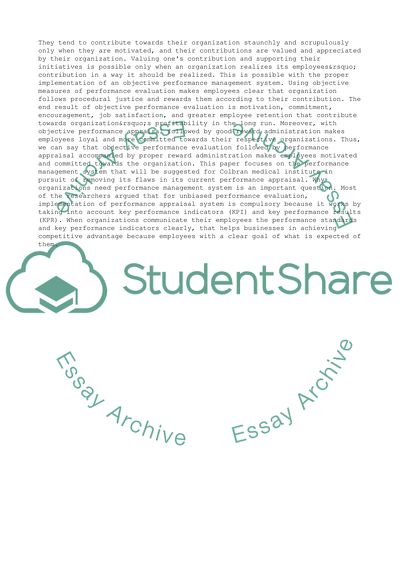Cite this document
(“The Performance Management System Of Colbran Medical Institute Essay - 1”, n.d.)
The Performance Management System Of Colbran Medical Institute Essay - 1. Retrieved from https://studentshare.org/management/1576560-the-performance-management-system-of-colbran-medical-institute
The Performance Management System Of Colbran Medical Institute Essay - 1. Retrieved from https://studentshare.org/management/1576560-the-performance-management-system-of-colbran-medical-institute
(The Performance Management System Of Colbran Medical Institute Essay - 1)
The Performance Management System Of Colbran Medical Institute Essay - 1. https://studentshare.org/management/1576560-the-performance-management-system-of-colbran-medical-institute.
The Performance Management System Of Colbran Medical Institute Essay - 1. https://studentshare.org/management/1576560-the-performance-management-system-of-colbran-medical-institute.
“The Performance Management System Of Colbran Medical Institute Essay - 1”, n.d. https://studentshare.org/management/1576560-the-performance-management-system-of-colbran-medical-institute.


